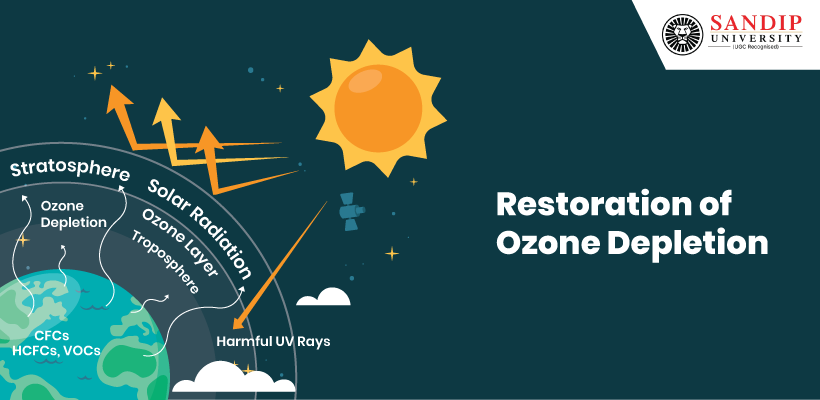This is indeed a very difficult time for the environment lovers and the environment itself. We come across various news about the adverse effects of climate change. The change in rain patterns across India, in addition to the volcano eruptions and cyclones are the recent news. All life on the earth is endangered due to climate change and human beings are no exception. But there is a silver line we can see in the news that came last week in which the UN- backed scientific panel has reported that there is a slow but definite recovery of the ozone layer.
A scientific assessment has revealed that the ozone ‘hole’ once considered the biggest threat to planetary life, is now expected to be completely recovered by 2066. The most prominent ozone layer depletion was observed over Antarctica, which will take a long time to recover while the rest of the world’s ozone layer is expected to recover by 2040.
Let us start from understanding what an Ozone layer is and how its depletion affects our environment.
What is the Ozone Layer?
Ozone is a molecule with a chemical formula of O3. It is mainly found in the upper layer of the atmosphere from 10 to 50 km., from the earth’s surface is known as the stratosphere. It is very important for planetary life as it absorbs the harmful UV radiations coming from the sun. UV rays are considered to cause skin cancer. It is also responsible for the various diseases and deformities in the plants and animals.
Depletion of Ozone Layer
In the early 1980s, it was observed that there was a decrease in the thickness of the ozone layer, which was termed as ozone layer depletion. The reduction of the concentration of the ozone was prominently observed in the South Polar Region known as Antarctica. The size of the ozone hole is the biggest during the months of September, October and November. The ozone molecule gets destroyed when it reacts with chlorine or bromine atoms. Approximately 100000 ozone molecules are destroyed by a single chlorine atom.
Causes of Ozone Layer Depletion
There are numerous factors responsible for the ozone layer depletion in which one of the most important factors is chlorofluorocarbon commonly known as CFCs. The CFCs are generally used in ACs and refrigeration. The other factors are unregulated rocket launches and nitrogenous compounds like NO2, NO and N2O.
Improvement in the Situation
The recovery of the ozone layer came in reality mainly because of the elimination of ozone layer depletion substances from the industries. The Montreal protocol played an important role in the filling up of ozone holes. The Montreal protocol is the multilateral environmental agreement, which inhibits the production, and consumption of nearly 100 fabricated chemicals referred to as ozone depleting substances (ODS). The current scientific assessments have revealed that if the current policies continue to be implemented the ozone layer concentration may reach the level where it was in the 1980s which is a good sign for the sustenance of life on the earth.
The elimination of ODS can also be good for climate change reversal. The ODS can also act as greenhouse gases which are responsible for global warming. Hence,elimination of these substances can also help in achieving the goal of control of global warming which is the most dangerous thing for the sustenance of life on the earth. The effective implementation of Montreal protocol like programs can definitely help in the reversal of climate change, which is a far more difficult problem than dealing with ozone depletion.
Conclusion
In conclusion, therefore, it can be said that there are various scientific ways in which the environment can be improved and protected. It is of utmost importance to protect the environment in order to prevent global warming and ensure a healthy atmosphere to thrive and live. Ozone Layer can have a big impact on the environment and can lead to the pollution of the environment. Therefore, environmental protection measures are necessary if we want to live in a clean environment.

